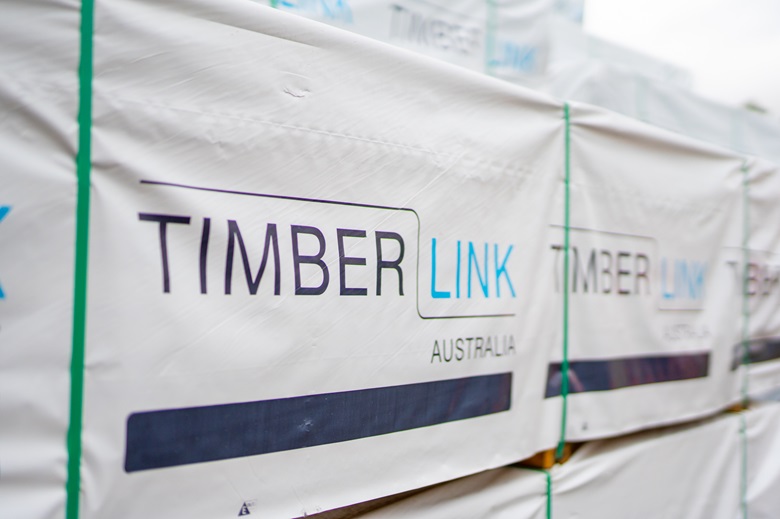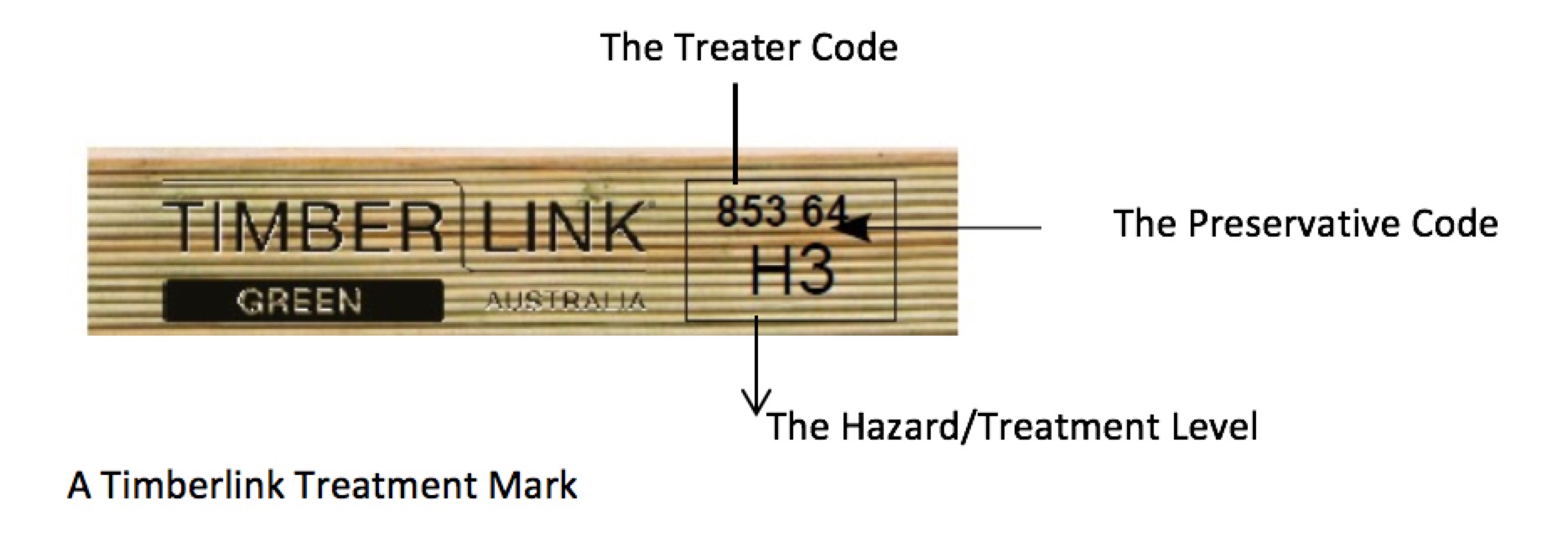
You should always look for a treatment mark or brand when purchasing treated timber especially if the timber will be used in a load bearing application where product failure has serious implications. Not only does the brand give you detail about the treatment, it is also an indication of quality, as by applying a treatment brand, the manufacturer is claiming it has been treated to Australian Standards.
A good tip when building with treated timber, is to keep or photograph the treatment tags as proof of where and how the timber was treated. You will need this info if you have any issues with the timber later on.
Where is the treatment brand?
It can be stamped on the timber, burnt into the timber or be on a tag attached to the end of the timber. It will always follow the same format as this is specified by the Australian Standard.
The brand consists of three groups of numbers/letters. These tell you who treated the timber, what chemical was used, and the level of treatment which is called the H level.

The Treater Code
The first three numbers identify where the timber was treated. The code in the example above ‘853’ is our Bell Bay Mill code. If you want to find out who treated your timber, a searchable list of all treatment plant numbers is maintained by the TPAA.
The Preservative Code
The next two digits are the preservative code. This tells you the preservative that’s been used on the timber. The ‘64’ in the example above represents LOSP. You can look up the most common treatment codes in the table below. For a more comprehensive list of timber preservatives, download this TPAA guide. Note that not all preservatives can be used for all H levels.
| Preservative Name | Preservative Codes | H Level Treatment Suitable For |
| Synthetic Pyrethroids | Bifenthrin 73, 75 Permethrin 70, 74 | H2 |
| Light Organic Solvent Preservative – LOSP | Permethrin 64; Imidacloprid 59, 60 | H3 |
| Copper Azole (brand name Tanalith E) | 58 | H3 – H5 |
| Alkaline Copper Quaternary – ACQ | 90 | H3 – H5 |
| Copper Chrome Arsenate – CCA | 01, 02, 03, 14, 15, 16, 31, 32, 33, 34, 38, 40, 43, 51, 55 | H3 – H6 |
The Hazard/Treatment Level
The final ‘H’ number tells you the level of treatment that’s been applied to the timber, also called the Hazard Level. This indicates the hazards the timber is protected against and therefore where you can use it.
You can use a higher level of treatment than the table states but never a lower number. A higher treatment level usually means more preservative has been applied to the timber and therefore the timber is likely to cost more.
There are six Hazard (H) Classes but only levels H3 to H6 can be used outside. The most commonly available treatments in Tasmania are H3 or H4.
Hazard Table
| Hazard Class | Where the treated wood may be used | What the timber is protected against |
| H1 | Inside above ground | Borer susceptible hardwoods |
| H2 | Inside above ground | Termites – Not a risk in Tasmania |
| H3 | Outside above ground, periodic wetting but where the timber can dry out; some leaching | Insects, termites and moderate decay |
| H4 | In or on the ground subject to severe wetting and leaching | Insects, termites and severe decay |
| H5 | In or on the ground subject to severe wetting and leaching, with or in fresh water | Insects, termites and very severe decay |
| H6 | In contact with sea water | Marine borers and decay |
Copper Chrome Arsenate (CCA) – Labelling Requirements
Any CCA treated timber sold in Australia, must also be marked as “Treated with Copper Chrome Arsenate”. This can appear on the treatment labels fixed to the ends of the timber or on the stamp branding along its length. For smaller end-section timber products, labelling individual pieces isn’t practical, the packaging must be labelled.
Learn more about using treated pine in our blog.
